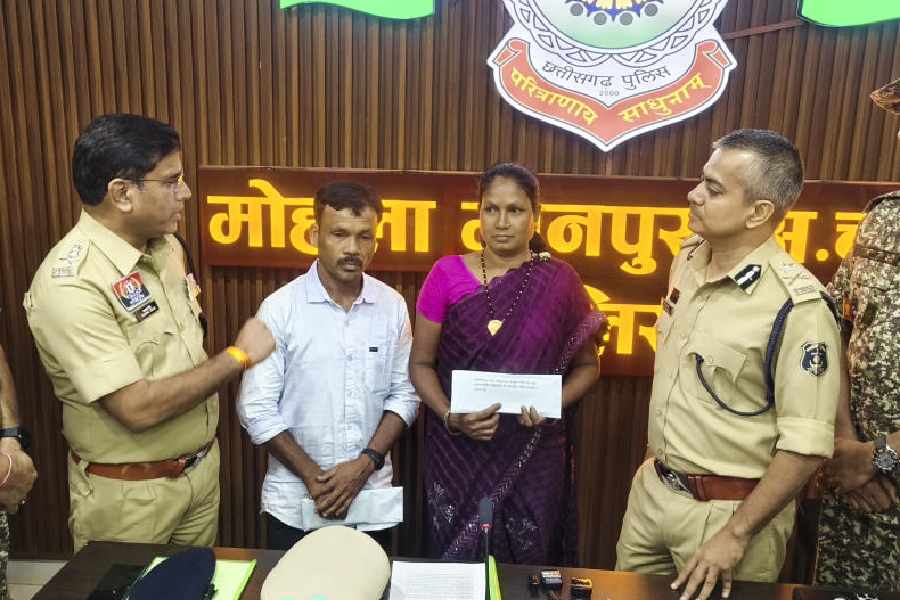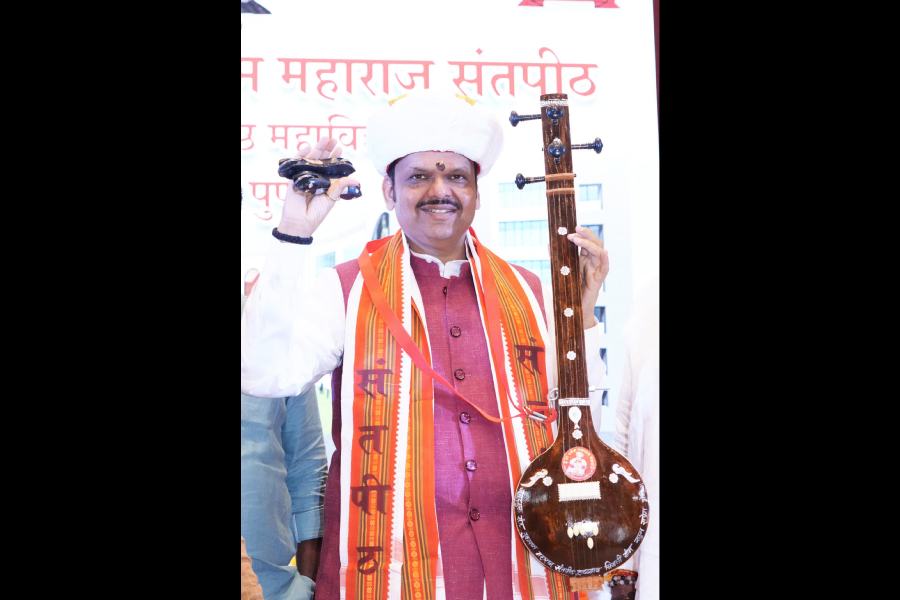
SHARING THE DREAM: THE REMARKABLE WOMEN OF SANTINIKETAN Edited by Tapati Mukhopadhayay and Amrit Sen, Visva-Bharati, Rs 300
Around 10 years ago I was gifted a set of postcards visually documenting Indian women from 1875 to 1947, published by the Centre for Women's Development Studies, Delhi. The set included a photograph, from Santiniketan of the 1930s, of the well-known Hindi writer, Shivani (Gaura Pant, whose writer-daughter, Mrinal Pande, we are more familiar with), chewing sugarcane sitting on a bullock cart with a fellow student. That unusual image sparked some curiosity in me and I found out that the young girl from Kumaon had spent more than a decade in Santiniketan with her brother and sister, graduating from Visva-Bharati and going back to the hills in 1943. Shivani's biography mentions Santiniketan having had a profound influence on her life and writings. The joyful and hilarious account of her days there in a book called Amader Santiniketan delighted me. Thereafter, Shivani got buried under a heap of sundry things in my mind until suddenly I found myself thinking of her again while leafing through a volume on the women of Santiniketan.
The editors of this volume have put together a collection of essays with the intention of documenting the role of "several remarkable women who shared Rabindranath Tagore's dream of creating an ecologically conscious and culturally enriched cosmopolitan community". As histories of Santiniketan have generally foregrounded men around the poet, they say, it is time to recall the contributions of women who richly contributed to the ethos of Santiniketan. Thus it is evident that this history writing/documentation is in an additive mode, highlighting women's participation without problematizing their roles and questioning the fields of power. For example, had it been otherwise, the piece on the "Rhapsodic Amita Sen (Khuku)" - who Rabindranath trusted most after his nephew, Dinendranath Tagore, to remember his songs and pass them on to others - would not have been so obsessed with trying to analyse her music recordings and place her as "the best artiste of the oral tradition of Santiniketan gharana" while maintaining a deafening silence about the difficult relationship that later developed between Amita and her world-renowned mentor.
There is a set of essays here on women of the Tagore household of which Supriya Roy's beautiful piece on Protima Debi and the creative collaboration between the poet and his daughter-in-law needs special mention, another set on wives and daughters of some of the earliest and leading architects of Santiniketan and Sriniketan, and a few pieces on some of the women students of Santiniketan who went on to become famous. There are also a couple of pieces that cannot be grouped easily which includes Amrit Sen's important essay on Gretchen Green. This American nurse-midwife not only acted as a bridge between women of the neighbouring villages and Santiniketan in the early 1920s but also made the first documentary film for the ashram's publicity in 1923. Her autobiography, called The Whole World and Company, suggests how she had imbibed the spirit of cosmopolitanism from her brief stint in Santiniketan.
The book ends with short bio-notes on some of the "powerful women" of Santiniketan without any clarification as to why they should be considered "powerful" and included specially. Citing the paucity of memoirs by women whose roles have been documented, the editors clarify that they have chosen "two sets of methodologies, personal reminiscence and critical analysis". While there is nothing wrong in bringing together a set of personal reminiscences with a set of critical essays, there is an overflowing of memory pieces here from the descendants of some of the women, without leaving any room for reflection and critical distance. A notable exception is the reflective piece by Santanu Mitra on his mother, Sujata Mitra, which draws interesting links between Sujata's life and Rabindranath's vision of and Kalimohon Ghosh's work in rural reconstruction, anecdotally recording significant mutations all the way.
If reminiscences were to be the backbone of the book, would it not have been worthwhile to translate scattered written fragments (quite a few exist) and transcriptions of oral narratives of some of the women portrayed and tie them up imaginatively with a critical introduction? It is also intriguing to see precious photographs that could have egged the reader on to visualize the lives that women in Santiniketan lived then occupy marginal space and get shabby placement in a book preoccupied with recollections.
Aware of some "glaring omissions", which the editors hope to correct in forthcoming volumes, they say nothing about the organizing principle of this one, and indeed of their selection of some of the pieces here. What, for instance, is the point of including a longish obituary piece on Mahasweta Devi without discussing her relationship with Santiniketan? I was looking for Mahasweta, a former student of Visva-Bharati. She used to say that at Santiniketan she learnt to feel joy simply by seeing flowers on the trees or gathering flowers that had fallen off instead of plucking them. What were her exchanges with Santiniketan? I would have liked to know.
Since the editors allude to the cosmopolitan community that Santiniketan once was, embracing and learning from people who came from elsewhere, believing that this is where the world makes its home in a nest, I was also hoping that a few women who came from other communities and other parts of the country to make Santiniketan their own would figure in this volume. I was thinking of the writer Shivani no doubt, also of the artist Jaya Appaswamy, of the musician Rajeshwari Vasudev and of many others whose names I do not know but who carried Santiniketan in their hearts and through their work all their lives. I believe a more variegated story would have emerged if women's contribution to the "ethos of Santiniketan" had been measured in different ways and the selection not largely confined to women from a particular social constituency.










